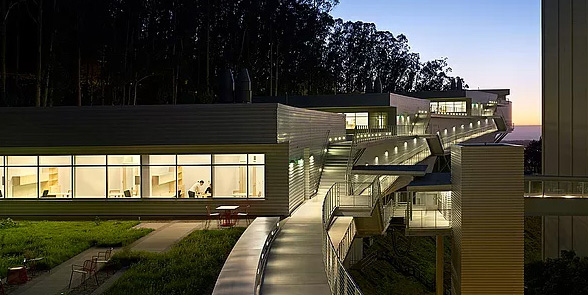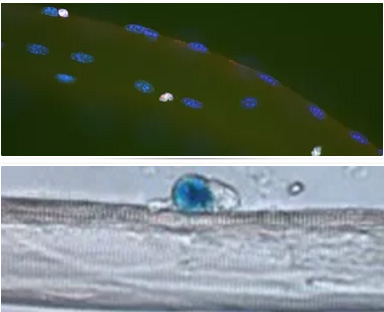Brack Laboratory for Skeletal Muscle Regeneration and Aging
35 Medical Center Way, RMB 1028 Box #0669
San Francisco, CA 94143
Tel: (415) 502-0515
Our work
Andrew Brack, PhD and his lab are focused on understanding the cellullar communication between the muscle stem cell and its environment to identify strategies that improve skeletal muscle regeneration and ameliorate sarcopenia.

Brack Lab at UCSF
Current projects
Topics covered in our research include: quiescence and self-renewal; stem cell niche; satellite cell heterogeneity; aging; human muscle stem cells and regeneration. For a complete listing of projects and publication, please visit our lab web site.
Quiescence and self-renewal
Maintenance and reacquisition of quiescence are defining features of adult stem cells. We are studying the intrinsic and extrinsic factors that control quiescence and how they impinge on self-renewal and differentiation potential during muscle homeostasis, injury response and aging. Using a muscle stem cell specific mutant we demonstrated that Sprouty1 (Spry1), an RTK signaling inhibitor, is required for the reestablishment of quiescence in proliferating stem cells. We are presently identifying intrinsic and niche-derived signals that promote and retain stem cell potential.
Stem cell niche
The stem cell niche as originally conceptualized refers to the microenvironment that maintains ‘stemness’. The niche is a protector of stem cell number and function restraining proliferation and differentiation of stem cells and maintaining a quiescent phenotype. The satellite cell niche may be composed of different cell types. We are presently identifying the cell types and the essential signaling elements that compose the niche to retain stemness after injury and are deregulated during aging.
Satellite cell heterogeneity
It is apparent that adult stem cell populations are heterogeneous. Using a marker of proliferative history, based on retention of a fluorescent marker, we recently demonstrated that the adult satellite cell pool is composed of subsets of cells that are slowly dividing during ontogeny. Label retaining cells possess the properties of stem cells; in contrast, satellite cell subsets that diluted label functioned as progenitors. During aging a subset of functional label retaining cells are preserved. Current projects are deciphering whether heterogeneity is due to extrinsic influences, such as discrete niches, or cell intrinsic regulation, such as epigenetic and metabolic status.
Aging
Aging is associated with a progressive decline in many tissues throughout the body. Skeletal muscle is no exception. We are studying the mechanisms that lead to a loss of stem cell number and function during aging.
Human muscle stem cells and regeneration
Our understanding of muscle regeneration capacity and the regulation of stem and progenitor cells derive from largely from murine studies. We are beginning an expansive program to understand how human skeletal muscle homeostasis and repair are controlled at the cellular and molecular level.

Brack Laboratory for Skeletal Muscle Regeneration and Aging
Eli and Edythe Broad Center of Regeneration Medicine and Stem Cell Research
Department of Orthopaedic Surgery
University of California, San Francisco
35 Medical Center Way, Box 0669
San Francisco, CA 94143